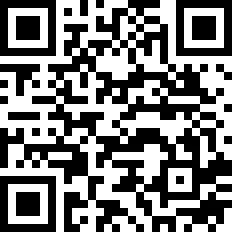
What is a QR Code?
A QR Code is a two-dimensional (matrix) barcode format initially developed, patented and owned by Toyota subsidiary Denso Wave for car parts management; it is now in the public domain. The “QR” is derived from “Quick Response”, as the creator intended the barcode to allow its contents to be decoded rapidly.
The QR Code consists of black modules arranged in a square pattern on a white background. The information encoded can be text, URL, or other data. Its components include: quiet zone, finder patterns, alignment pattern, timing pattern, version information, data cells and error correction.

Why use a QR Code for a VIN?
QR codes are an easy, fast way to find and read Vehicle Identification Numbers or VINs, allowing vehicle dealers to access information easier and more quickly with the use of a high quality VIN scanner system. Here are a few reasons why QR codes are ideal formats for VINs:
Advantages include:
- Readable From Any Direction: The alignment patterns at the three corners of the image enable rapid reading, while the timing pattern allows for the code to be read even if distortion or damage has occurred.
- More Information: They efficiently pack more information in a smaller space as opposed to one-dimensional (1D) barcodes. Each barcode can store up to 7,089 values.
- Fewer Errors: They employ much more robust error correction technology than traditional 1D barcodes; in addition to having built-in error checking systems, they may still easily be detected and read if damage has occurred.
- Easily Read: They are easily read with any smartphone.
- Greater Security: They provide greater security than 1D barcodes, due to their ability to encrypt information.
What are the typical uses of QR codes in the automotive industry?
Now used for everything from directing consumers to websites to paperless menus at restaurants, QR codes are everywhere. But they actually originated in the automotive industry as a way to track automobile parts. For vehicle dealers, the QR code can be helpful in a variety of ways. QR codes affixed to cars on the lot can direct shoppers to useful information about the vehicle; QR codes on dealership signage can encourage visitors to sign up for news and offers by providing contact information; finally, dealers and manufacturers are using QR codes for VINs (as opposed to other barcodes) as a way to help dealers easily access vehicle information.
How do I scan a VIN QR Code?
As most people know, scanning a QR code is as simple as using the camera on your phone. But with a dedicated app specifically for VIN scanning, dealers will get more powerful vehicle information on the go to help them better sell. The Laser Appraiser VIN Scanner for iPhone and Android allows dealers to quickly and easily scan a VIN, delivering a mobile vehicle appraisal and valuation, with live, critical auction and valuation data.
How does Laser Appraiser use VIN QR Codes?
The Laser Appraiser VIN scanner is an ideal way to get vehicle information quickly. And with new advanced technology, it can automatically find VIN QR codes, VIN numbers or VIN barcodes within larger blocks of text, automatically—even damaged or hard-to-read codes! Having a fast-reliable VIN scanner is vital for dealerships, but specifically for small independent dealers. To keep prospective buyers engaged on the lot, you need in-depth vehicle information at your fingertips, and even a moment wasted with a faulty scanner can compromise the deal.
How can I generate a QR code from a vehicle identification number (VIN)?
You can generate VIN QR Codes for free with our handy VIN Code Generator Tool. This tool allows you to turn any VIN into a barcode—either a QR Code, PDF417, Data Matrix or Code 39. Simply choose your code type, enter your VIN and then select your format and resolution to generate your VIN QR Code.
Get Easy VIN QR Code Scanning with Laser Appraiser
The Laser Appraiser VIN Scanner is an ideal way to get vehicle information from a QR code quickly. See how it works with a FREE trial!
